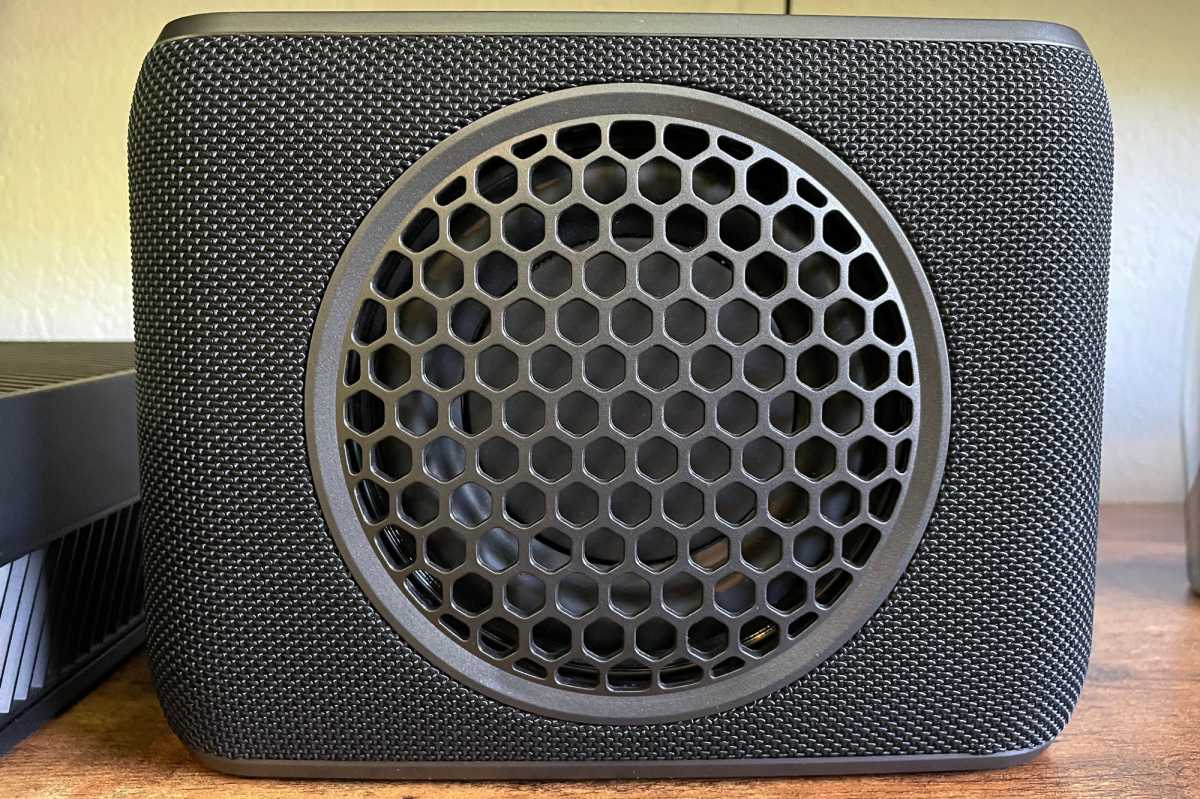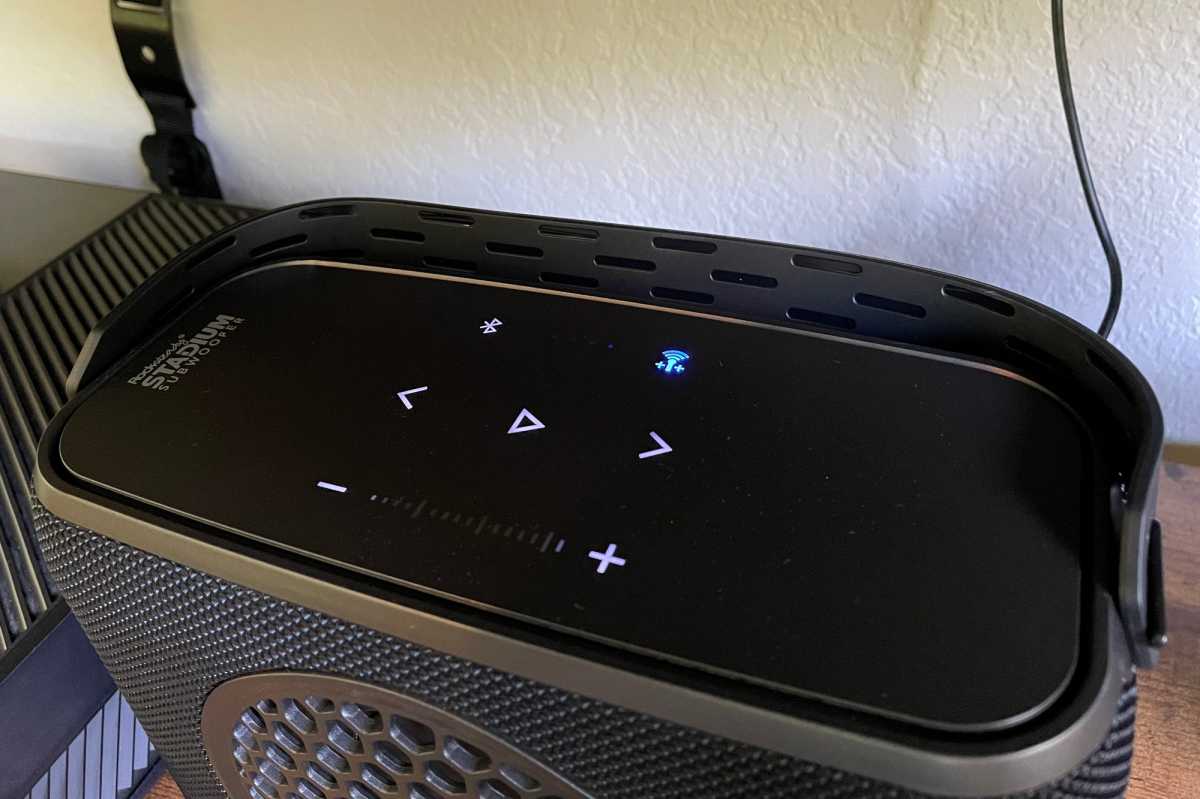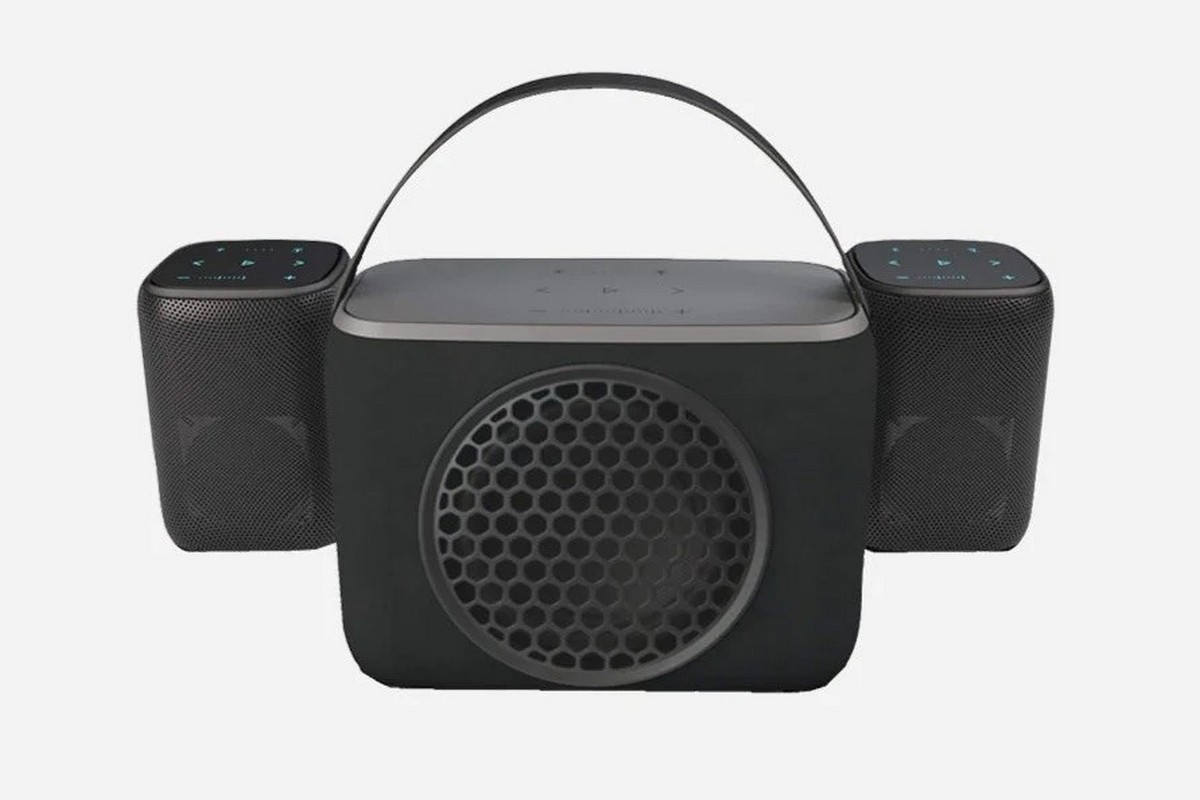Our Verdict
Rocksteady’s $200 subwoofer brings big bass to the Bluetooth world—one with other Rocksteady speakers in it, that is.
In our Rocksteady Stadium Bluetooth speaker review, we found that these pint-sized powerhouses are designed with multi-speaker environments in mind. You can synchronize an unlimited number of speakers (and assign left and right channels to them via a simple switch) to create a true surround-sound experience.
So, what’s missing? While the Stadiums’ drivers deliver bass response as low as 60Hz, true bass-heads are bound to want something deeper and more immersive. Enter the Rocksteady Stadium Subwoofer, which the company says is the world’s first standalone, portable Bluetooth sub.
This review is part of TechHive’s in-depth coverage of the best Bluetooth speakers.

The Rocksteady Stadium Subwoofer’s 130mm bass driver is protected by a plastic grill.
Christopher Null/Foundry
The subwoofer is portable but it’s definitely beefy, about twice the size of Rocksteady’s satellite models measuring 8.67 x 6.38 x 4.33 inches (HxWxD) and weighing a hefty 4.73 pounds. It keeps the same all-black design as the satellites, though a large, plastic-covered grille in the front cues you to the 130mm bass driver (powered by a 30-watt amplifier) and 170mm x 115mm passive bass radiator hidden behind it. Powered by a rechargeable 15000mAh battery, the unit has triple the battery capacity of a Rocksteady satellite. With a frequency response of 30- to 350Hz, it is a true subwoofer built for handling nothing but lows.
And it does that well. When I first fired up the subwoofer—after hours of charging it via a USB-C cable (included, with power adapter)—I was greeted by a thunderous boom that nearly knocked me over. (By default, the speaker had been set to maximum volume.) I’ll talk more about the audio quality, post-adjustment, in a bit.
Rocksteady’s secret sauce is its ability to synchronize with other Rocksteady speakers, which you’ll need to do to make any use of it, since the subwoofer cannot be used with other brands of Bluetooth speakers. The company recommends making the subwoofer the “host” and setting all satellites as secondary devices. The host takes the signal—either Bluetooth or analog audio via an auxiliary input—and relays it as appropriate to the additional devices. This wasn’t the easiest process on the Stadium speakers, and it once again took a couple of tries to get it working perfectly; adding a third speaker to the mix only complicates the process. That said, once you have the set working as a team, they will remain in that configuration even after you power them off—at least until you make other changes.
The Stadium Subwoofer has the same set of simple, touch-sensitive controls on its top panel (volume, pause, previous-track/next-track) as Rocksteady’s satellites, but I felt the panel was not as securely attached to the subwoofer as it is on the satellites, wiggling around a bit when you touch it. It’s a minor thing, but it nagged me throughout testing.

The Rocksteady Stadium Subwoofer’s touch-sensitive controls are identical to those on Rocksteady’s satellites.
Christopher Null/Foundry
One of the challenges of Rocksteady’s design is that each speaker has individual volume controls, and adjusting one doesn’t change the volume of the others. This can result in a significant amount of tweaking as you figure out the right levels for everything—subwoofer in particular—and a lot of getting up, walking to the speakers, and sitting back down to determine if the volume levels are right.
The easier method, of course, is that you can simply adjust the volume at the source (i.e. on your mobile device directly); but when I connected the speakers to my television’s aux output, it wouldn’t allow me to adjust the output volume through the set. Your mileage may vary depending on your device, but an app that allows you to control volume levels remotely regardless of input source (and perhaps set equalization levels and manage Stadium mode settings) would be a huge plus for this line.

The Rocksteady Stadium Subwoofer, shown here with its companion satellite speakers, has a rubber strap, but the one on our review unit got warped during shipping.
Rocksteady Audio
As for the audio quality, there’s nothing not to like here. The subwoofer offers a classic big bass experience that is loud but accurate, and after my volume tweaking, I found it a measurable enhancement to Rocksteady’s already solid Stadium line, really creating an immersive sound environment that’s hard to get from a more typical Bluetooth speaker setup. You really need to crank up the volume to get the bass to start breaking up; for most environments and source media, clarity will never be a problem. As well, even with three speakers, I had no trouble with audio falling out of sync no matter which source I used.
My complaints are minor. First is aesthetic: The unit comes with a removable, rubber strap to make it easier to carry. Ideally this would form a perfect, purse-like arc over the top of the unit, but my strap was warped from shipping and listed unattractively to one side. I ended up removing it entirely. Second, while turning off the host speaker is supposed to turn off all your satellite speakers, this didn’t reliably work every time; more importantly, turning a configured host back on doesn’t turn on the satellites. You need to manually turn each of them on every time you start a listening session.
Rocksteady’s speakers aren’t cheap, and this $200 subwoofer means you’re out $430 for a three-speaker setup. That puts this configuration squarely in luxe territory. But the audio quality speaks for itself: In a 2.1 configuration, this is truly one of the highest-quality and most versatile speaker setups you’ll find in a non-wired setting.



